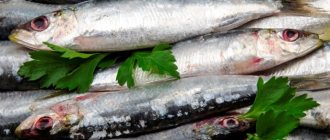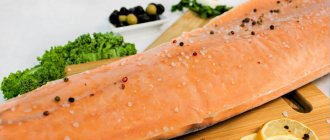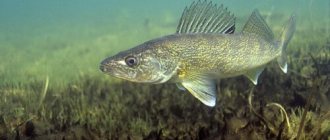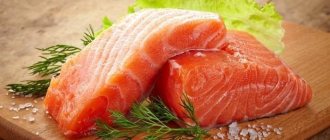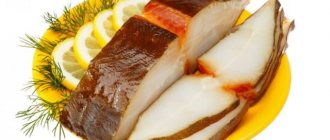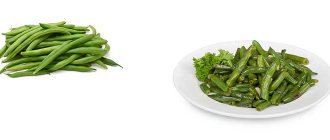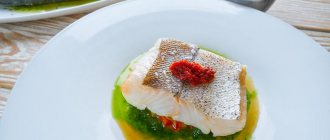Red fish is a dish that will decorate and enrich any holiday table, and, in addition, will delight you with its taste, and most importantly, will benefit your health.
In this article:
- What kind of animal is this red fish?
- Nutritional value of red fish Omega-3
- Phosphorus
- Iodine
- Who benefits from red fish and how?
- Salmon: composition and health benefits
- The effect of trout on our health
- The effect of salmon on our health
- How to choose the right red fish (video)
- Positive qualities of trout
What kind of animal is this red fish?
It so happened that we proudly call all fish from the sturgeon family “red”. This name has long been attributed to beluga, sterlet, sturgeon and stellate sturgeon, which live in the Caspian Sea. And they were called “red” not for the color of the meat, it has a pale yellowish-pink color, but for its high nutritional value and taste. Hunters and fishermen, when they said “red beast,” meant that they got extremely valuable prey.
Nowadays, we include in this category all varieties of fish whose flesh has a pale or brighter red tint. This description also includes species of fish from the salmon family: salmon itself, trout, salmon, chum salmon and pink salmon. But there are some representatives of this group that have milky-white meat, and therefore belong to the category of white fish. And only in some regions of the Kuban does this name still mean exclusively sturgeon representatives.
How many calories are in red fish?
Here's how much:
Naturally, the calorie content of red fish depends on the type and method of preparation.
Pay attention to this table:
Table of calorie content and nutritional value (BJU) per 100 grams:
| Red fish: | Bel, gr. | Fat, gr. | Angle, gr. | Cal, kcal. |
| Sevruga fresh | 17.0 | 11.8 | 0.0 | 160 |
| Beluga fresh | 21.0 | 0.7 | 0.0 | 147 |
| Beluga dried | 69.9 | 5.3 | 0.0 | 327 |
| Bester fresh | 21.0 | 0.7 | 0.0 | 147 |
| Fresh sturgeon | 16.4 | 10.9 | 0.0 | 163 |
| Boiled sturgeon | 17.7 | 12.0 | 0.0 | 179 |
| Fried sturgeon | 16.0 | 17.4 | 13.2 | 273 |
| The thorn is fresh | 16.4 | 10.9 | 0.0 | 164 |
| Fresh sterlet | 17.0 | 6.1 | 0.0 | 122 |
| Boiled sterlet | 17.5 | 2.0 | 0.0 | 88 |
| Baked sterlet | 17.3 | 3.3 | 0.8 | 142 |
| Fresh salmon | 19.9 | 13.6 | 0.0 | 201 |
| Boiled salmon | 19.8 | 9.0 | 0.5 | 153 |
| Fresh pink salmon | 20.5 | 6.5 | 0.0 | 142 |
| Boiled pink salmon | 22.9 | 7.8 | 0.0 | 168 |
| Fresh chum salmon | 22.0 | 5.6 | 0.0 | 138 |
| Boiled chum salmon | 19.4 | 5.4 | 0.0 | 126 |
| Fresh salmon | 21.6 | 6.0 | 0.0 | 140 |
| Boiled salmon | 22.5 | 12.5 | 0.0 | 189 |
Great video with great tips. Worth a look!
And further:
When asked which is healthier – meat or fish, nutrition experts answer: both are equally healthy. Alternating both diversifies our diet and is one of the necessary conditions for a balanced diet for most people (except vegetarians).
Nutritional value of red fish
If you start listing all the beneficial substances and microelements that make up red fish, then even a few pages will not be enough; you can only note that it is very, very useful.
Omega-3
I especially want to highlight omega-3 fatty acid, which it is rich in. This is where the main benefits of red fish lie. This is not just fish oil, but a whole complex of fatty acids that are valuable for human health.
These beneficial omega-3 acids:
- cleans blood vessels from cholesterol plaques,
- prevent heart disease,
- maintain healthy arteries
- strengthens the overall immunity of the body,
- and especially have a positive effect on visual acuity.
Phosphorus
It is also worth mentioning the increased content of phosphorus in fish, which strengthens bone tissue and reduces their fragility.
Iodine
And, of course, we want to mention iodine. Its maximum amount is found only in fish! And as you know, it helps increase concentration and improve memory.
Which red fish is better: sea or domestic?
Under natural conditions, fish feed on algae and phytoplankton, from which they obtain useful components and polyunsaturated fats. Small species are devoured by predators. Thus, large representatives also acquire omega-3 and minerals. The last link in the food chain is humans.
Today, sturgeon and salmon are grown artificially in special plants. However, they are fed not with natural flora and fauna, but with protein concentrates and synthetic vitamins.
Naturally, fish that grew in the sea has more beneficial properties. But there is also another side to the coin. What is the ecological state of salt water bodies on Earth? Industrial waste and heavy metals are all buried (or simply dumped) into the world's oceans. Therefore, red fish may contain toxic mercury and lead. Entering our body, they accumulate and lead to serious diseases.
Who benefits from red fish and how?
This product is especially useful for expectant mothers. Doctors recommend including fish in their daily diet. Scientists agree that such food will also benefit the vision of a child who is still in the womb.
If you eat a little red fish at least once a week, you will increase your visual-spatial abilities by six percent, and also protect your body from the attack of colds and other viruses, and save your eyes. Therefore, by eating red fish, we not only enjoy the excellent taste, but also strengthen our own health.
You can eat fish in any form, because it does not lose its positive qualities when cooked.
It is also useful to try fish for those who want to lose weight: fish contains proteins and amino acids, which have a good effect on fat metabolism in the body.
What to look for when buying red fish
To get the most out of your trout or sockeye salmon, you need to know how to choose the right one. In a store or supermarket, pay attention to the following points:
- The eyes of the fish must be transparent. If they are cloudy, the product is stale.
- The pulp is dense and cannot be pressed through.
- The scales of newly caught chum or sockeye salmon are covered with mucus and smell like the ocean.
- Raise your gills. A rich red hue indicates freshness. If the color is not detectable or has lost its brightness, the fish was caught in the net a long time ago.
Salmon: composition and health benefits
Salmon is not just tasty, but also incredibly healthy fish from the salmon family.
Salmon recipes are very popular, and thanks to deep freezing, you can try salmon in the oven and other dishes at any time of the year. Salmon has a pleasant and delicate taste, while it is devoid of the characteristic fishy smell, and is quick and easy to prepare.
Salmon recipes in the diet allow you to support the functioning of the body’s most important systems: nervous, immune, cardiac, vascular, digestive, etc. In addition, harmful chemical compounds do not accumulate in this fish. Despite the high calorie content, salmon dishes are well digestible and do not cause fat deposits.
It can be boiled, fried, baked, salted, pickled and smoked. Salmon recipes include appetizers and main courses, aromatic soups and hearty kebabs, salads and vegetable stews. Regular consumption of salmon improves metabolism and blood circulation, normalizes the functioning of the liver and stomach, strengthens the arteries, immunity and nervous system.
BUT!
Lightly salted salmon or trout is a perishable product, and poisoning with it is among the most severe. Therefore, it is extremely important to purchase only high-quality fish cuts that have not expired.
The effect of trout on our health
Most often, trout can be found on the shelves of our stores at an affordable price. It lives in both fresh and salt water, and there is no difference in the taste of freshwater species from marine ones.
Trout is a source of human health and longevity. It is an indispensable product in the baby's diet.
The main benefit of trout is its high content of polyunsaturated acids. Vitamins such as B, E, D, A, in interaction with amino acids and microelements, make this species a truly irreplaceable product.
Positive qualities of trout
Regular consumption of trout has a positive effect on the functioning of the cardiovascular system, preventing the development of a heart attack. A number of studies conducted by scientists around the world have proven that this type of fish alleviates the condition of patients:
- diabetes mellitus,
- osteoporosis,
- depression,
- allergies,
- psoriasis.
But there is also gastronomic elitism: trout has a delicate, delicate, complex taste, and is also extremely tolerant of the method of preparation. Trout can be grilled, boiled or fried, baked in the oven with cheese and cream, or used lightly salted slices for sandwiches or canapés. You can also make a mousse from smoked trout and serve it with a green salad and toasted bread.
The effect of salmon on our health
Salmon, like trout, is not only a sea fish, but also a river fish. It has tender orange-pinkish meat. You can often find ocean creatures in supermarkets.
Salmon fishing is a fairly ancient craft, so the culinary properties, as well as the harms and benefits of red fish, have been thoroughly studied over several centuries.
It is especially pleasant that during cooking, be it frying, stewing, baking or salting, neither the shape nor the size of the fish changes.
This representative of the salmon family contains a huge amount of easily digestible fats and nutritious proteins, which immediately places the product in the dietary category. It can be safely consumed even by diabetics.
Nutritionists agree that vitamins B and D have a particularly positive effect on the human body. Just 100 grams of fish per day replaces the daily need for these vitamins.
But omega-3 fatty acid not only consolidates the achieved effect, but also resists:
- inflammatory processes,
- prevents cancer,
- fights the formation of blood clots,
- stands in the way of arthritis and arthrosis,
- and also helps cope with vascular and heart diseases.
As mentioned above, salmon contains useful microelements and acids, which, in addition to health benefits, have a positive effect on the growth and strengthening of hair, nails and other body tissues.
Regularly eating delicious salmon dishes:
- lowers blood pressure,
- normalizes blood cholesterol levels,
- reduces eye fatigue,
- and prevents the development of astigmatism.
In addition, it was noticed that as a result of such nutrition, mental activity increases and memory improves significantly.
It is worth knowing that red fish is an extremely healthy product,
given to us by nature itself. It does not accumulate toxins from its environment, and salmon dishes are free of carcinogens, even those in which the fish is fried.
In conclusion, I would like to note that here, as in everything, there must be moderation. After all, excessive consumption of any fish, red fish will be no exception, can cause more harm than if there is a lack of it in your diet.
Sturgeon
First of all, the name “red fish” is correctly applied to this classification. Since it is the oldest, the best, but also the most expensive of all listed. Sturgeon, unlike salmon, is still a rare and valuable delicacy. Buying caviar and fish from the sturgeon family is not so easy, because most species are prohibited from being caught for industrial purposes. Sturgeon meat is well absorbed by the body, has a wide range of vitamins and microelements, and is recommended for the treatment of diseases of the gastrointestinal tract.
Beluga
The beluga lives mainly in the White, Caspian, Azov and Adriatic seas. Beluga is the largest freshwater fish. Body sizes on average range from 2 to 4 meters. Beluga has dry meat: it contains only 1 gram of fat. Calorie content remains at an average level - 150 Kcal. Beluga is rich in protein compounds and other beneficial microelements. The taste of beluga is tough, and some of the breeds have a characteristic creamy tint.
Siberian sturgeon
The Siberian sturgeon lives in the rivers of the Arctic Ocean basin (Ob, Yenisei, Lena, Kolyma, Yana, Indigirka) and Baikal. The energy value of sturgeon is one of the highest - almost 170 Kcal. Of which, almost 11 grams are healthy fats. Glutamic acid gives sturgeon its excellent taste. The sturgeon dish turns out juicy, like poultry or pork.
Kaluga
Kaluga is endemic to the Amur basin. The second largest representative of the sturgeon, after the beluga. A very large fish, reaching more than 4 meters in length and 800-1000 kg in weight. The fish flesh is practically boneless, so the product can be used almost entirely. 100 grams of kaluga contain 10 fats and 18 proteins. The energy value of fish is 163 Kcal.
Sterlet
The smallest representative of sturgeon. Most often, the average weight is 1-3 kg. Distributed very widely, but unevenly. Most numerous in the Volga basin. Depending on the type, the energy value of sterlet meat may differ. For European sterlet it may not exceed 100 Kcal. Whereas the Siberian variety has more than 300 Kcal. Sterlet is a fairly juicy fish: it contains 30 grams of fat.
Stellate sturgeon
It is well distinguished from other sturgeons by its very elongated snout, long narrow body and the contrast between light scales and darker body. The usual sizes of sturgeon at the end range from 126 to 152 cm and weight from 6.2 to 12.7 kg. Lives in the Caspian and Azov-Black Sea basins. From a culinary point of view, stellate sturgeon has excellent taste: the meat has a faint aftertaste of iodine. The calorie content of stellate sturgeon is 160 kcal. Of which 17 grams are proteins and 11 are fats. Stellate sturgeon has acquired the greatest value due to its Omega-3 and Omega-6 content, as well as collagen.
Thorn
Thorn fish is found in the Aral and Caspian seas, and is also found in the Black and Azov seas, but in smaller quantities. The fish is so called due to the spike-shaped growths on the longitudinal surface of the fish. Body length up to 2 meters, weighs up to 30 kg. and more. The thorn is listed in the Red Book of the Russian Federation, as it is recognized as a high-quality sturgeon breed on the verge of extinction. Thorn fillet has a slightly sour taste and a specific marine aroma. The calorie content of the spike is 164 Kcal per 100 grams of product. Like all sturgeon, the thorn is quite juicy: almost 11 grams of fat per 100 grams of meat. The main feature of meat is maintaining weight after heat treatment.
Russian sturgeon
Lives in the Azov, Black and Caspian seas. The main river for spawning is the Volga, where it rises to Volgograd. It also spawns in the Don, Ural, Terek, and Kuban. After this, it rolls off to the seas to feed. The average weight does not exceed 20-25 kg. Fresh sturgeon ranks first in terms of sodium content and easily digestible proteins. The calorie content of fresh sturgeon is 163 Kcal per 100 grams of product, of which: 17 grams are proteins, and 11 grams. – fats.
shovelnose
The ray-finned shovelnose, from the sturgeon family, is one of the most unusual in appearance fish in the whole world. The red shovelnose lives exclusively in the Mississippi River. The average size of the fish is 60-90 cm in length with a weight of no more than 4.5 kg. A close relative lives in Kyrgyzstan and Turkmenistan, which is often passed off as the original fish. The energy value of shovelnose is the same as that of ordinary sturgeon: approximately 160 kcal, which contains mainly protein and 10-11 grams of fat.
Bester
Bester received its name as a result of crossing two fish of the sturgeon family, namely female beluga and male sterlet. The weight of standard commercial fish is 3-6 kg. Its appearance is not much different from its sturgeon “parents”. However, real fishermen can easily recognize this particular fish in the photo by its shark-like tail. Bester looks extremely unusual. It is impossible to catch it in a natural reservoir. The fish is not released into free swimming as it can harm other sturgeon representatives. Bester fillet is the most dietary among all sturgeon species: 100 grams of product contains only 0.7 fat.
